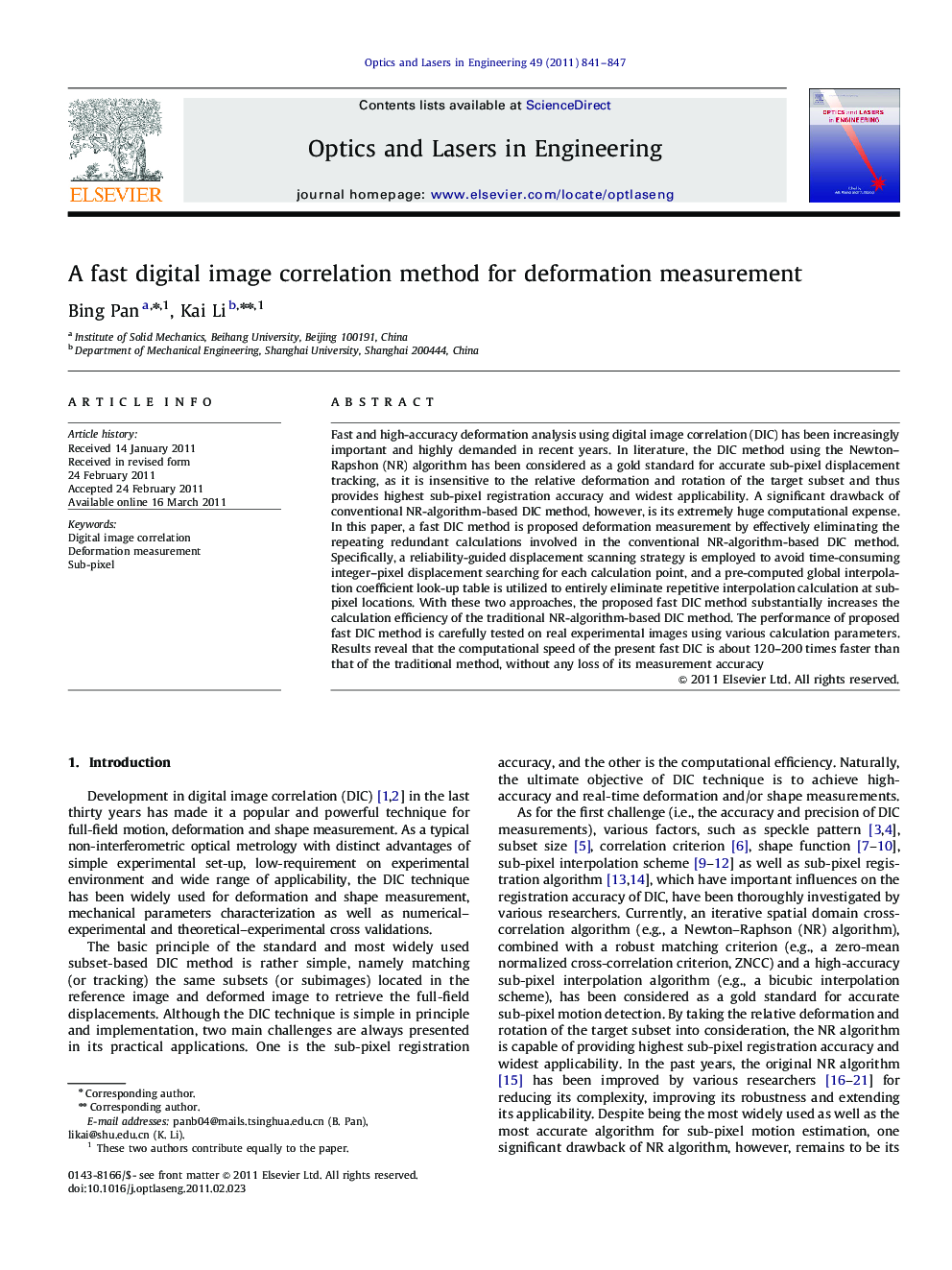| Article ID | Journal | Published Year | Pages | File Type |
|---|---|---|---|---|
| 735377 | Optics and Lasers in Engineering | 2011 | 7 Pages |
Fast and high-accuracy deformation analysis using digital image correlation (DIC) has been increasingly important and highly demanded in recent years. In literature, the DIC method using the Newton–Rapshon (NR) algorithm has been considered as a gold standard for accurate sub-pixel displacement tracking, as it is insensitive to the relative deformation and rotation of the target subset and thus provides highest sub-pixel registration accuracy and widest applicability. A significant drawback of conventional NR-algorithm-based DIC method, however, is its extremely huge computational expense. In this paper, a fast DIC method is proposed deformation measurement by effectively eliminating the repeating redundant calculations involved in the conventional NR-algorithm-based DIC method. Specifically, a reliability-guided displacement scanning strategy is employed to avoid time-consuming integer–pixel displacement searching for each calculation point, and a pre-computed global interpolation coefficient look-up table is utilized to entirely eliminate repetitive interpolation calculation at sub-pixel locations. With these two approaches, the proposed fast DIC method substantially increases the calculation efficiency of the traditional NR-algorithm-based DIC method. The performance of proposed fast DIC method is carefully tested on real experimental images using various calculation parameters. Results reveal that the computational speed of the present fast DIC is about 120–200 times faster than that of the traditional method, without any loss of its measurement accuracy
► A fast digital image correlation method based high-accuracy Newton-Raphson algorithm is proposed in this paper.► Two simple but effective approaches were proposed to remove the redundant calculations involved in the classic Newton-Rapshon algorithm.► Experimental results reveal that the proposed fast DIC is approximately 120–200 times faster than traditional Newton-Raphson-algorithm-based DIC method, and its computational speed is comparable with existing commercial DIC software, but the principle behind the latter one is unclear to us.► It is expected that the proposed fast and high-accuracy DIC will find more potential applications in many situations where computational time is critical.
